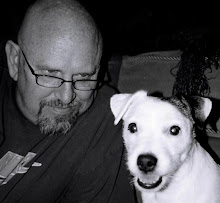2. Kant
Kant is known as the advocate of the Copernican Revolution in philosophy. Just as Copernicus moved the center of the heavens from the earth to the sun, so Kant moved the focus of reality and knowledge from the world out there to the structure of the human subject’s mind. Kant focused upon the thing-in-itself or the Ding an Sich. Beyond the experience and knowledge based upon the structure of the human subject’s mind lies the thing-in-itself, which one can never experience or know as it is in itself, because we only experience or know through the medium of the mind’s own structure. Although all that is experienced or known occurs through the structure of the subject’s mind, objectivity and absolute truth still exist because there is a common structure, rationally discernible, consisting in intuitions in space and time and the categories of thought, that is, pure concepts of understanding. The structure of the mind is transcendental rather than transcendent. That is, it lies at the base of all experience and makes experience and knowledge possible. Absolute truth rests upon pure reason, theoretical or practical, and cannot be based upon sensory experience, which is always conditional or contingent. Kant presents an elaborate, intensely detailed analysis of consciousness that becomes, with the rejection of much of his fixed structure, the basis for continental phenomenology.
skip to main |
skip to sidebar

About Me

- Eddy F. Carder, Ph.D.
- Eddy graduated from Texas A & M Commerce with degrees in Social Work and Psychology. He is also a graduate of Southwestern Baptist Theological Seminary, receiving the Master's of Divinity in 1984, and the Doctor of Philosophy in Christian Ethics in 1995. In addition, Eddy has participated in summer programs of study in Homiletics at Cambridge and Oxford. Currently, Eddy is Assistant Professor of Philosophy at Prairie View A&M University, and in addition teaches Philosophy of Religion with the B.H. Carroll Theological Institute.
Readers
Blog Archive
-
▼
2011
(123)
-
▼
March
(23)
- 19th Century Philosophers: Marx
- 19th Century Philosophers: Marx
- 19th Century Philosophers: Marx
- 19th Century Philosophers: Marx
- 19th Century Philosophers: Schopenhauer
- 19th Century Philosophers: Schopenhauer
- 19th Century Philosophers: Schopenhauer
- 19th Century Philosophers: Schopenhauer
- 19th Century Philosophers: Schopenhauer
- 19th Century Philosophers: Hegel
- 19th Century Philosophers: Hegel
- 19th Century Philosophers: Hegel
- 19th Century Philosophers: Hegel
- 19th Century Philosophers: Hegel
- 19th Century Philosophers: Hegel
- 19th Century Philosophers: Hegel
- 19th Century Philosophers: Hegel
- 19th Century Philosophers: Hegel
- 19th Century Philosophers: Hegel
- 19th Century Philosophers: Hegel
- 19th Century Philosophers: Hegel
- 19th Century Philosophers: Background
- 19th Century Philosophers: Background
-
▼
March
(23)
